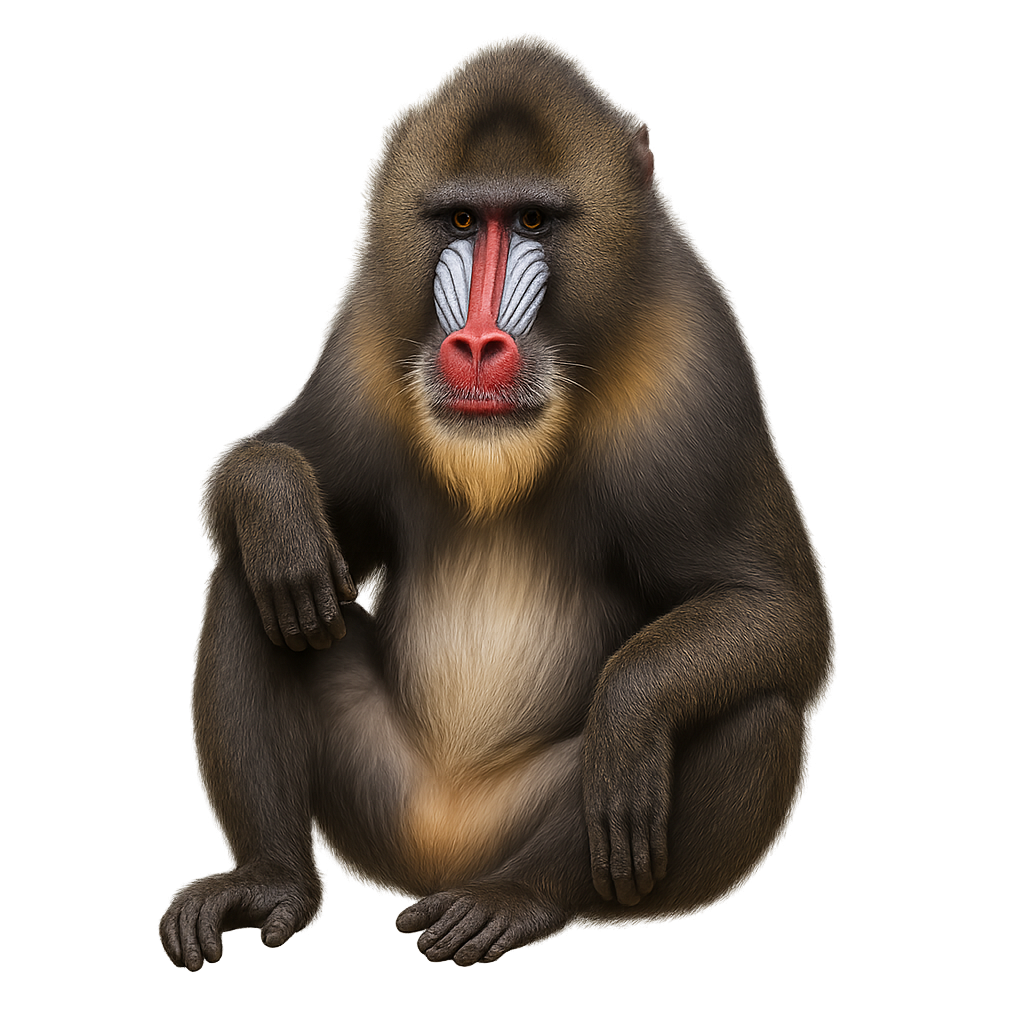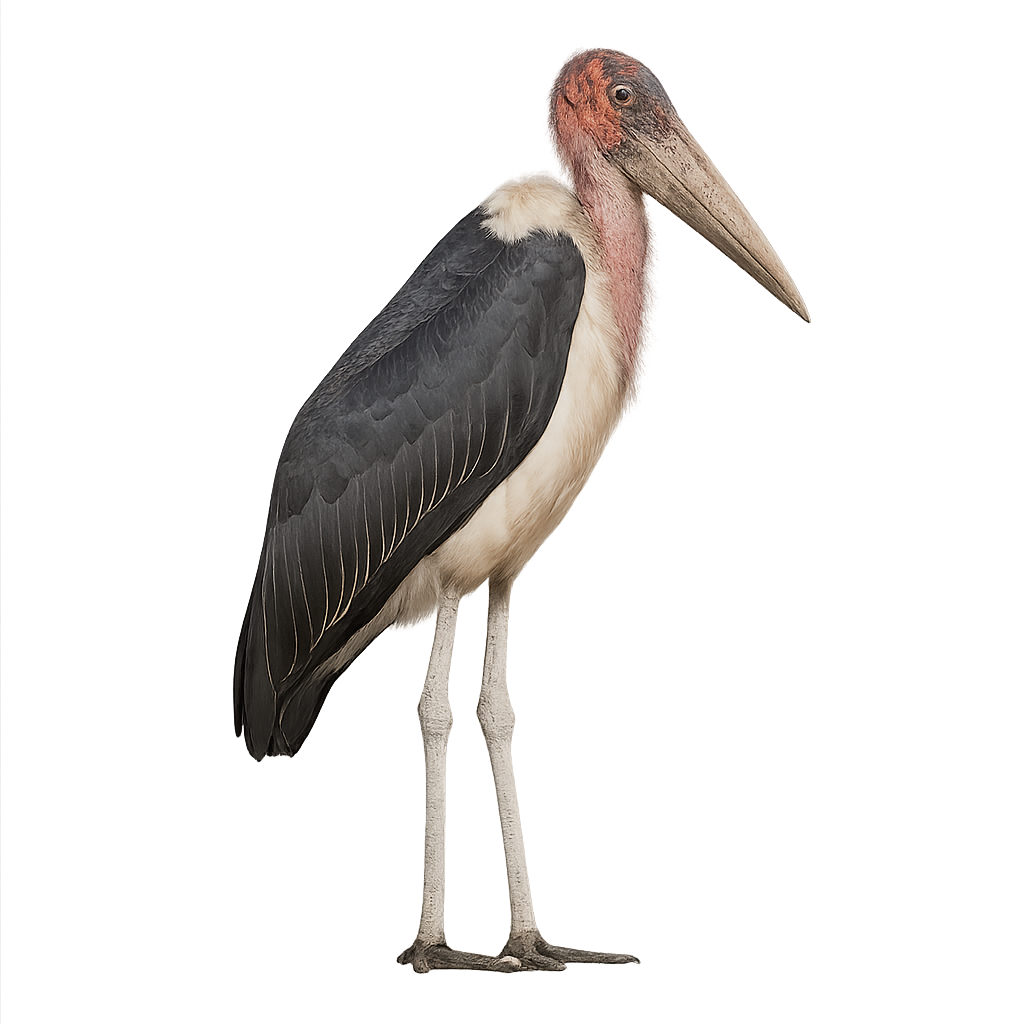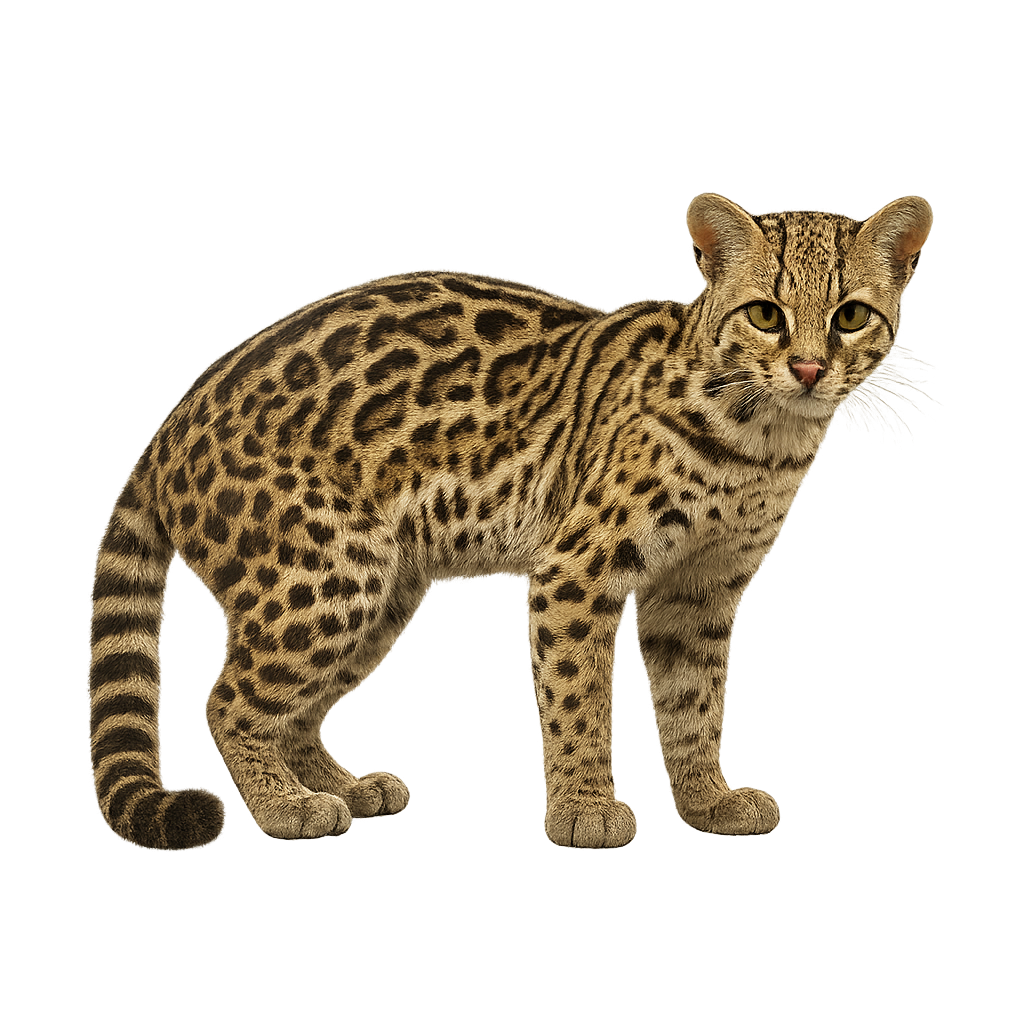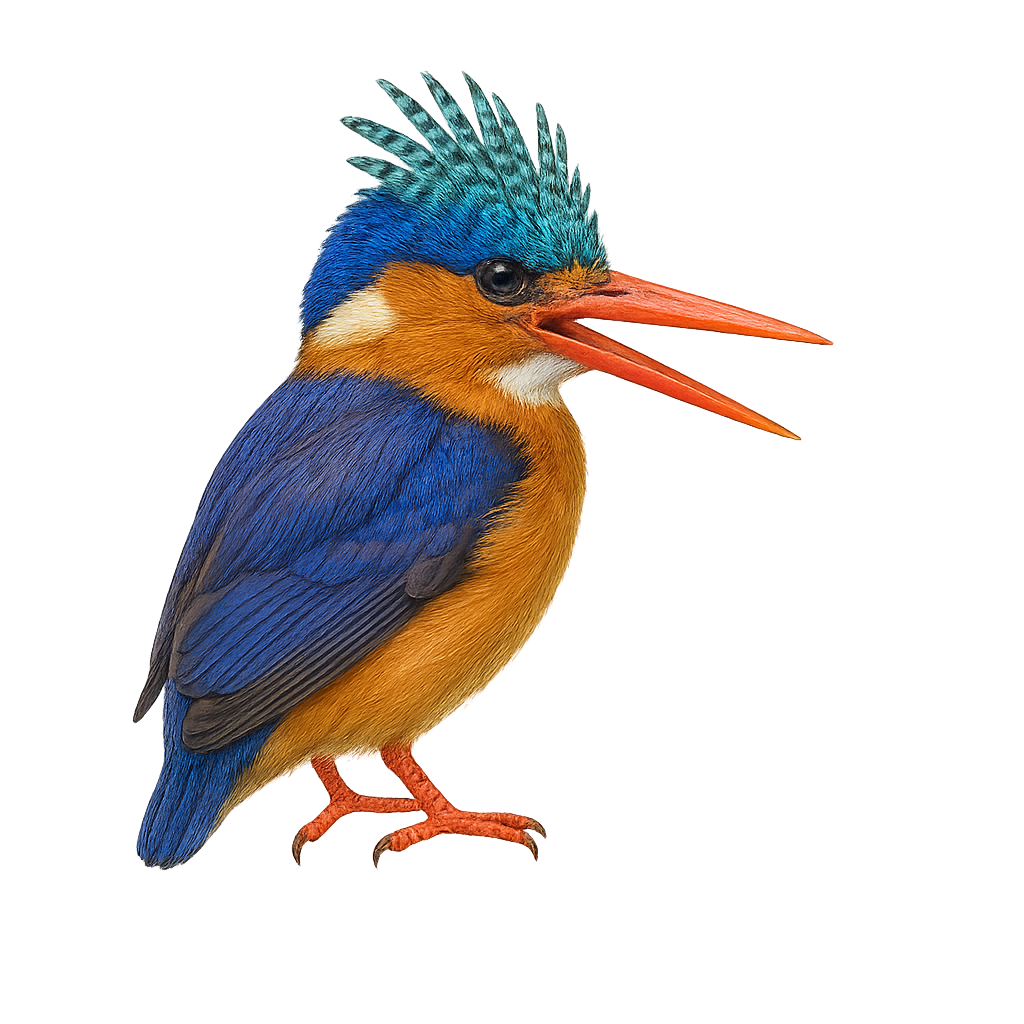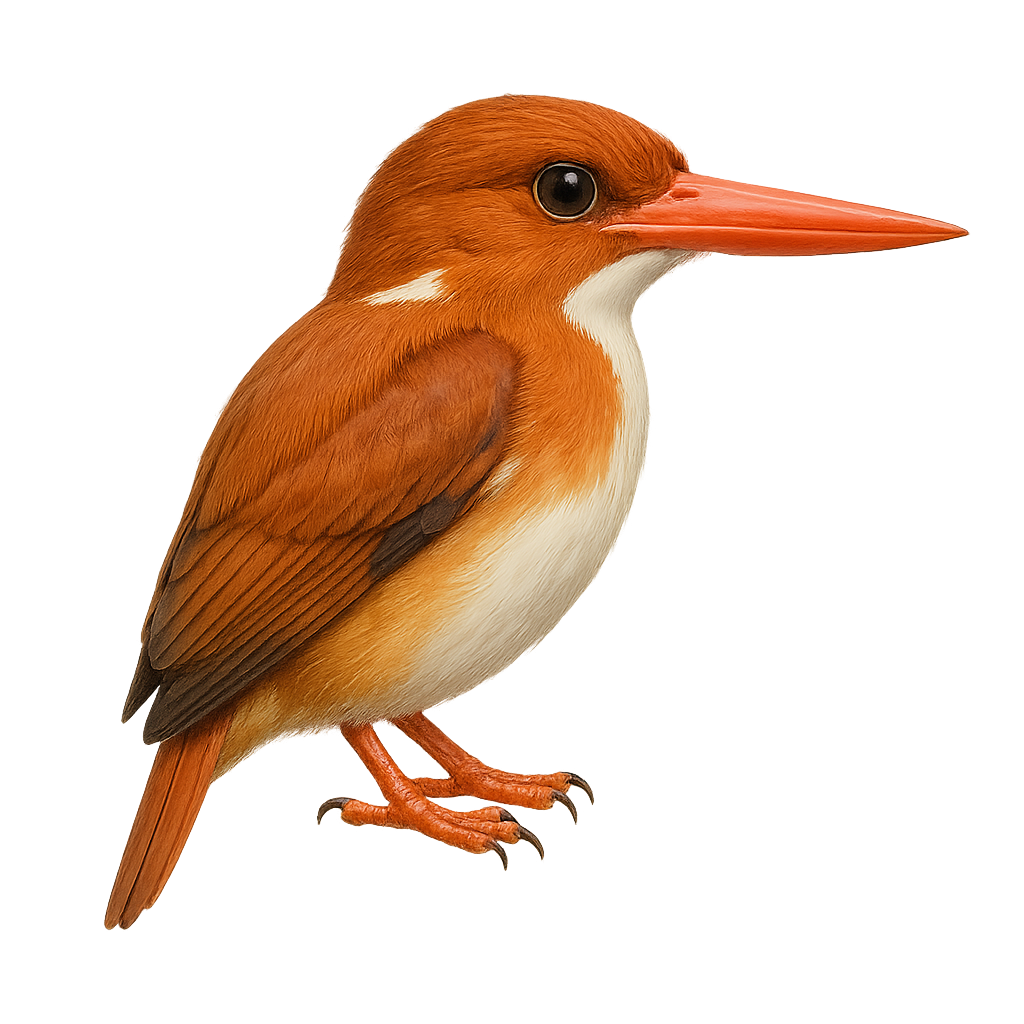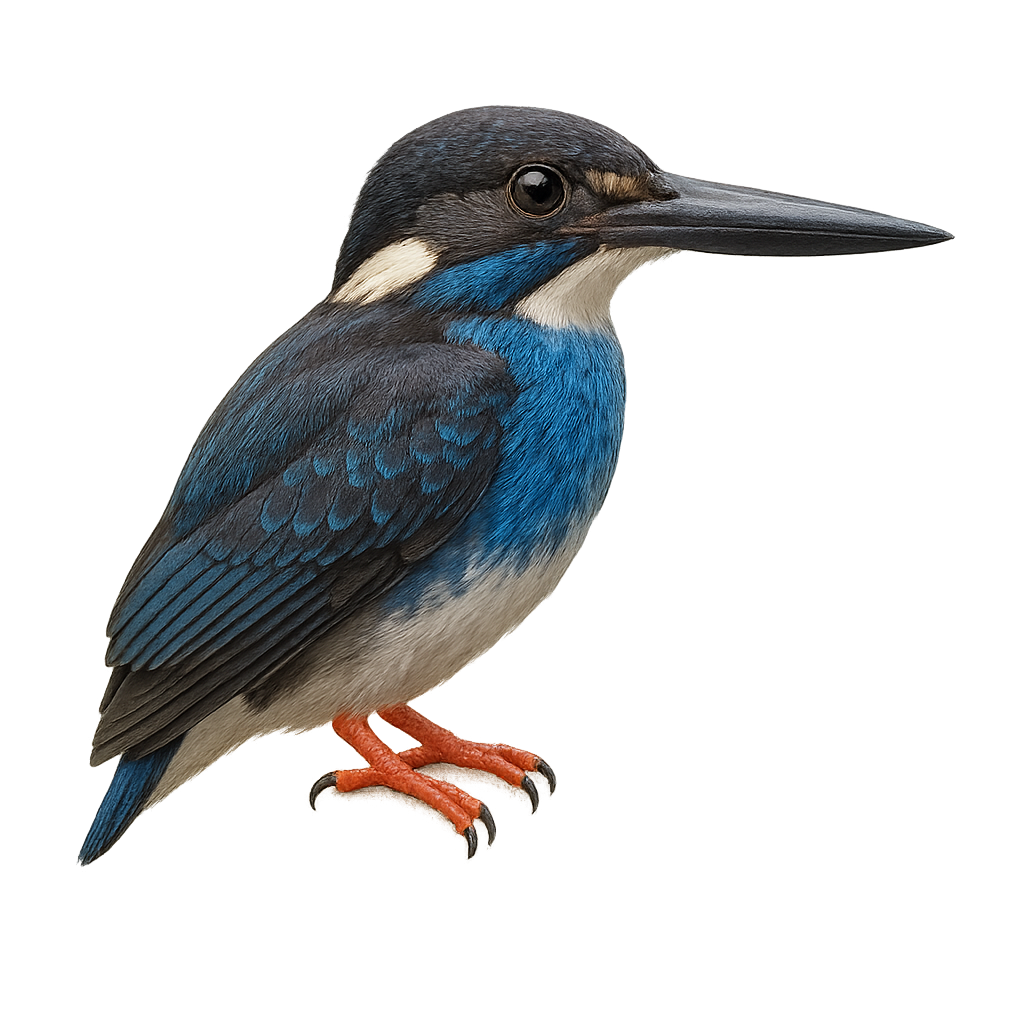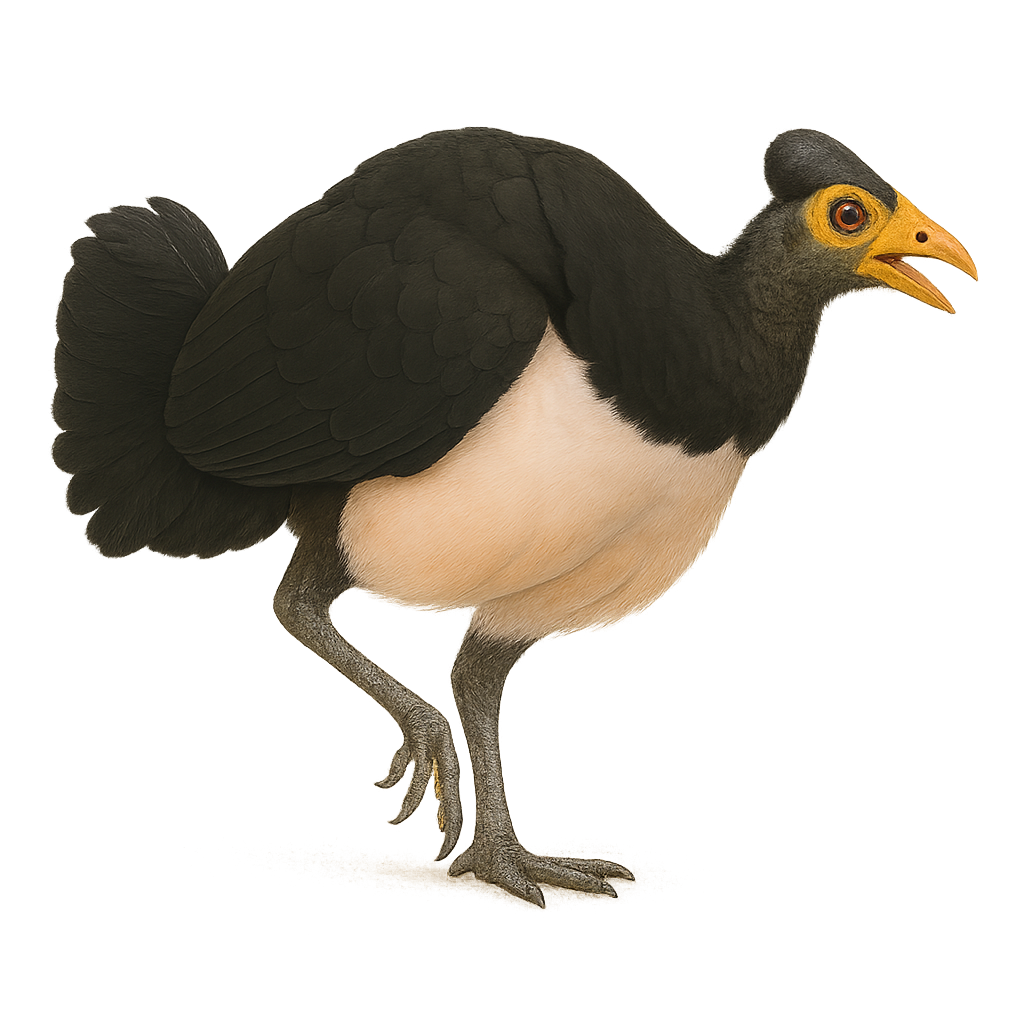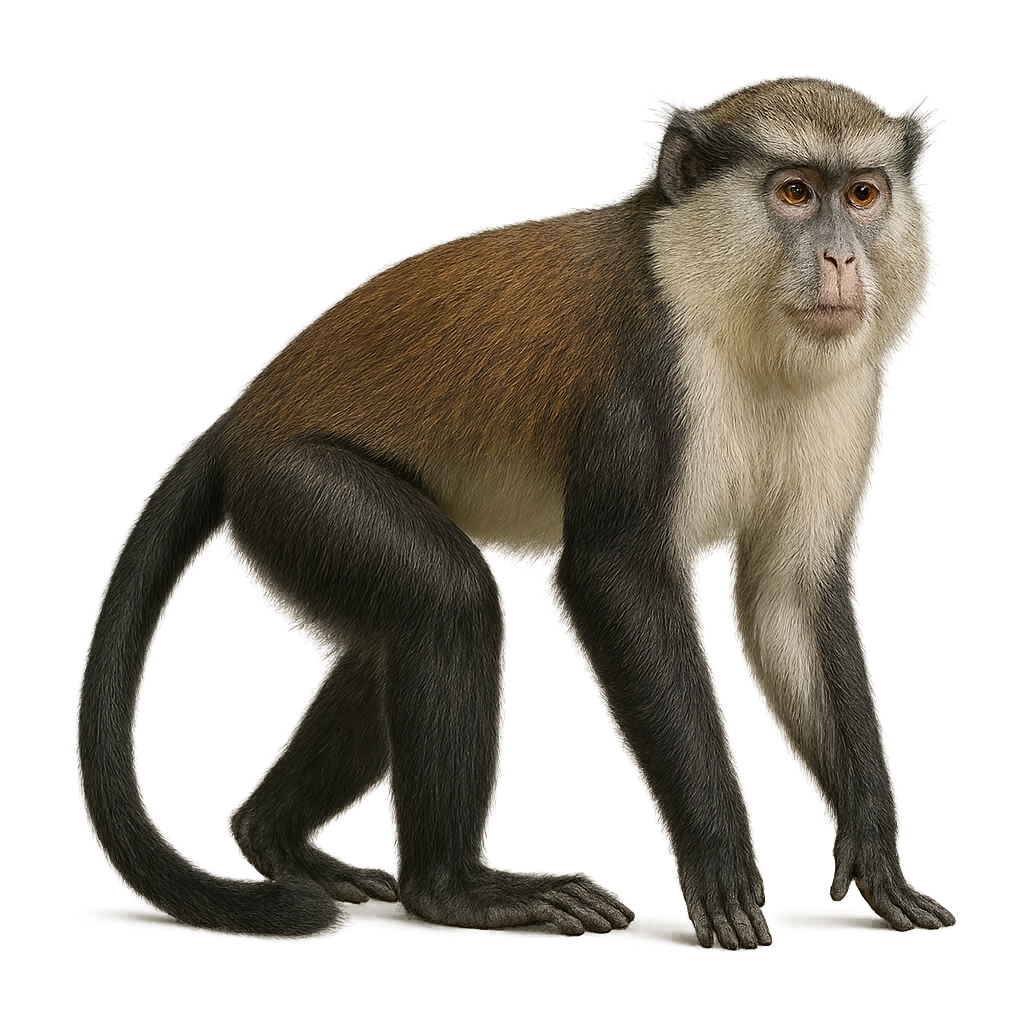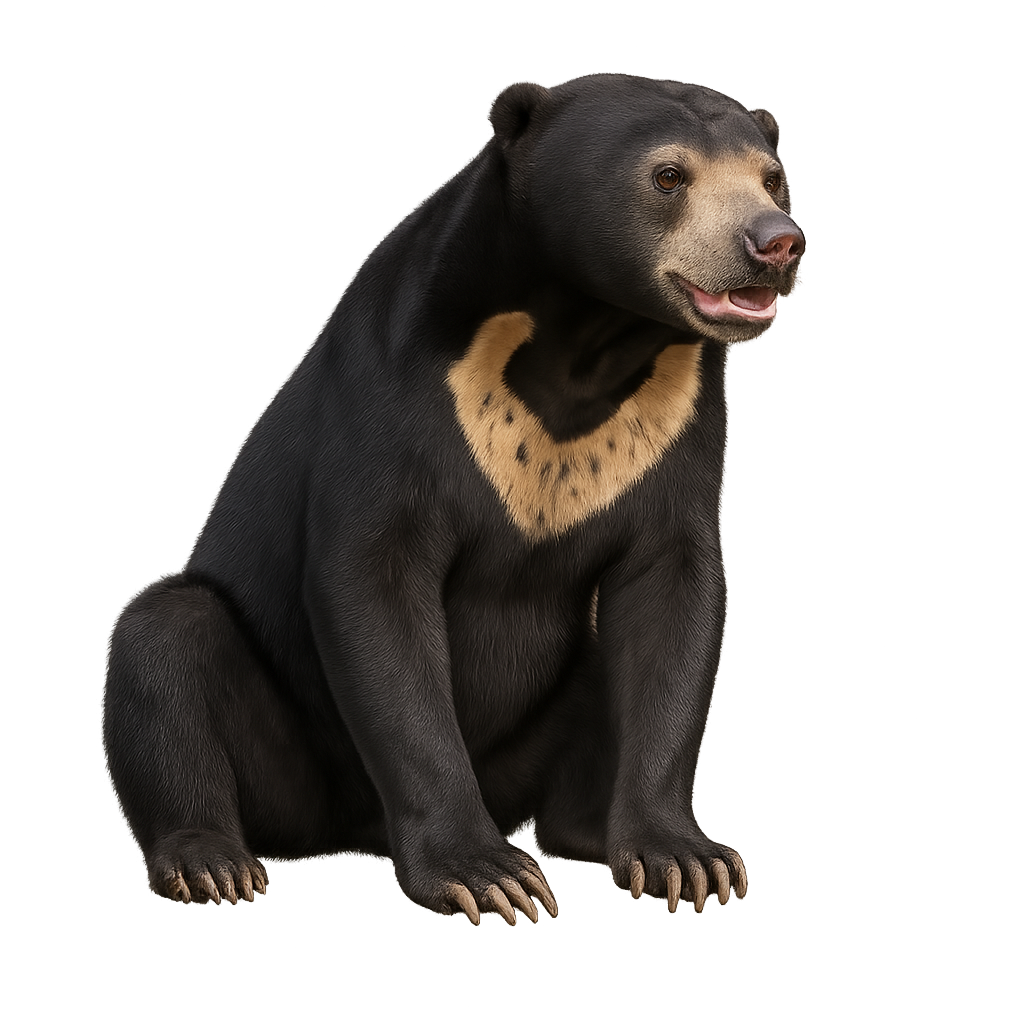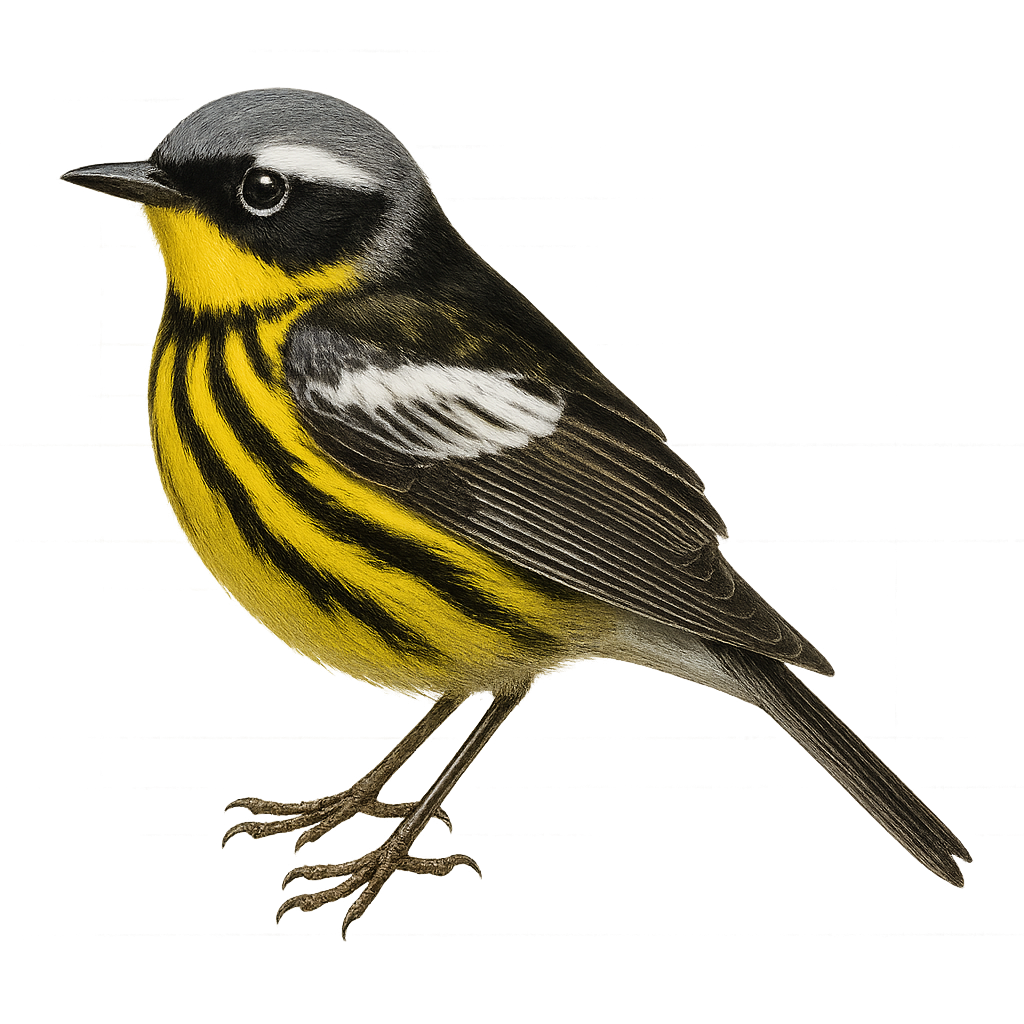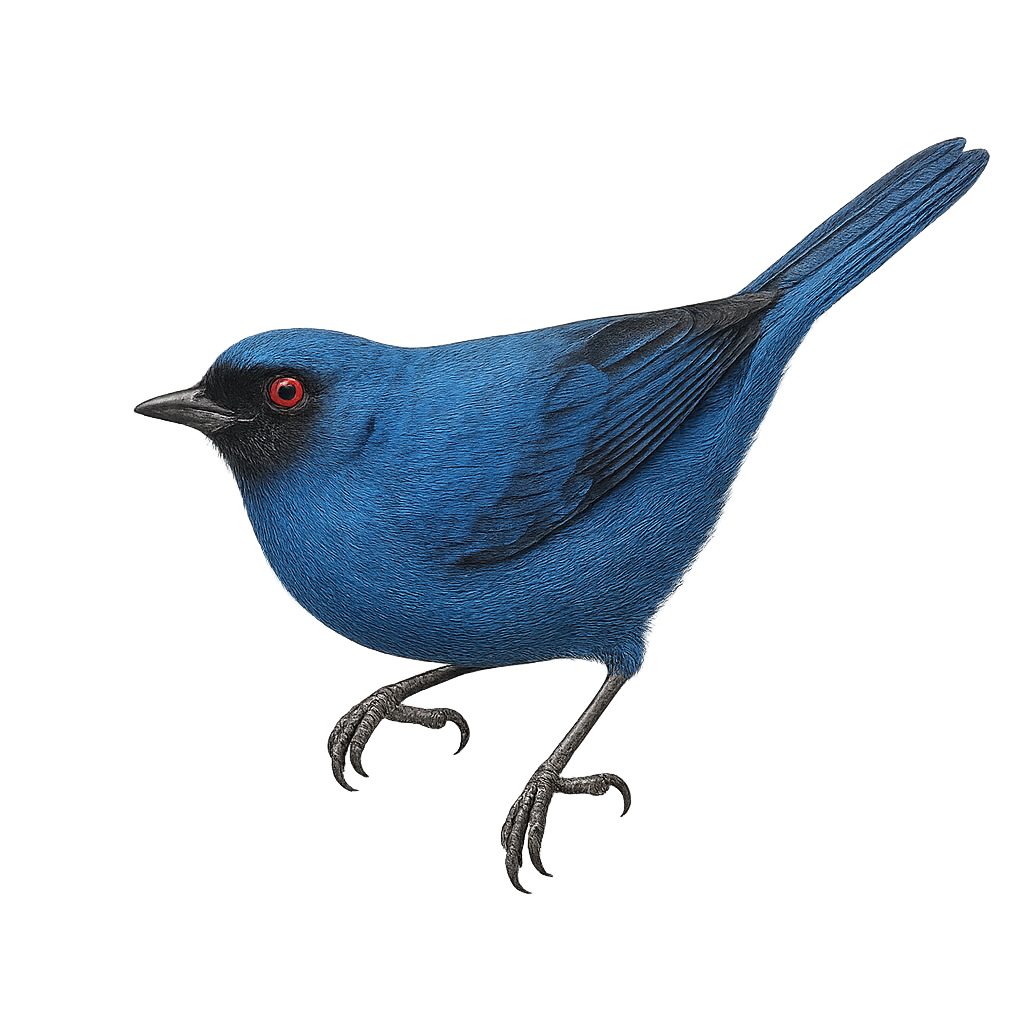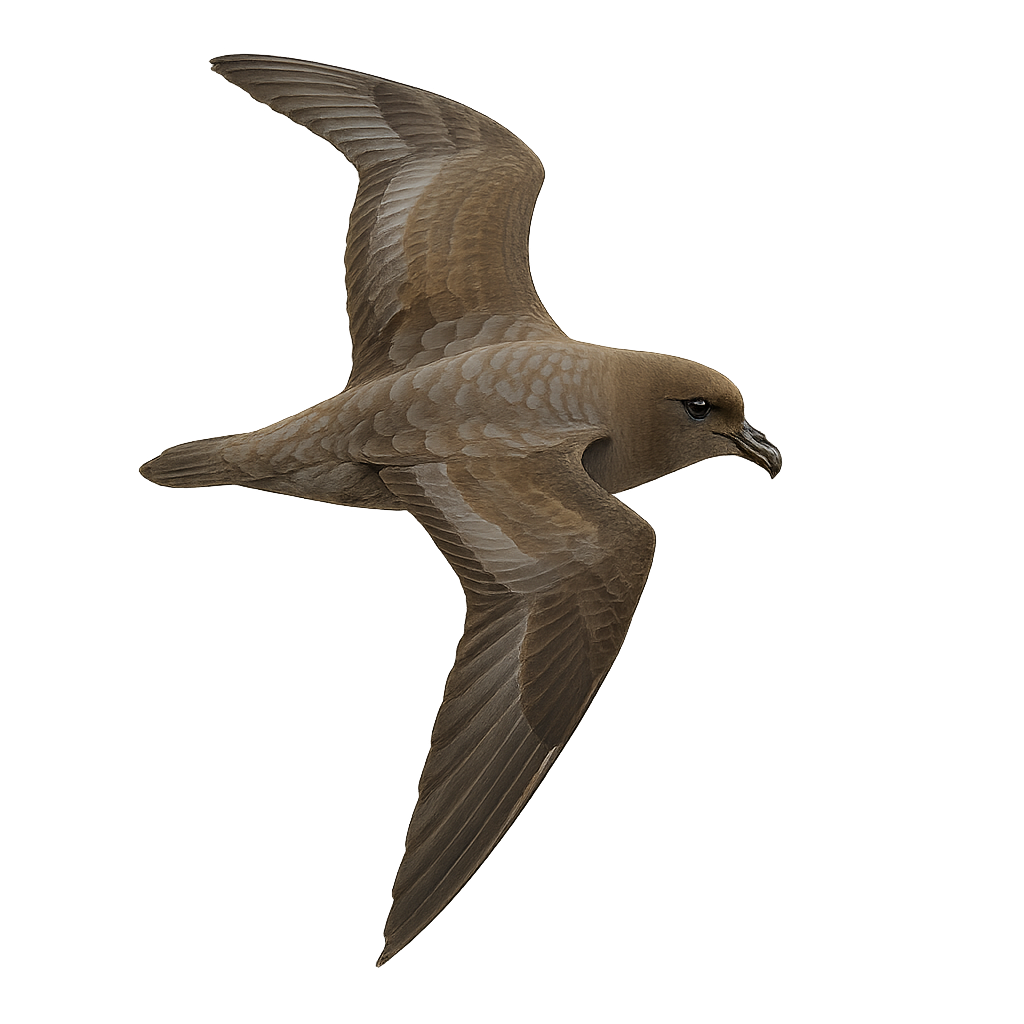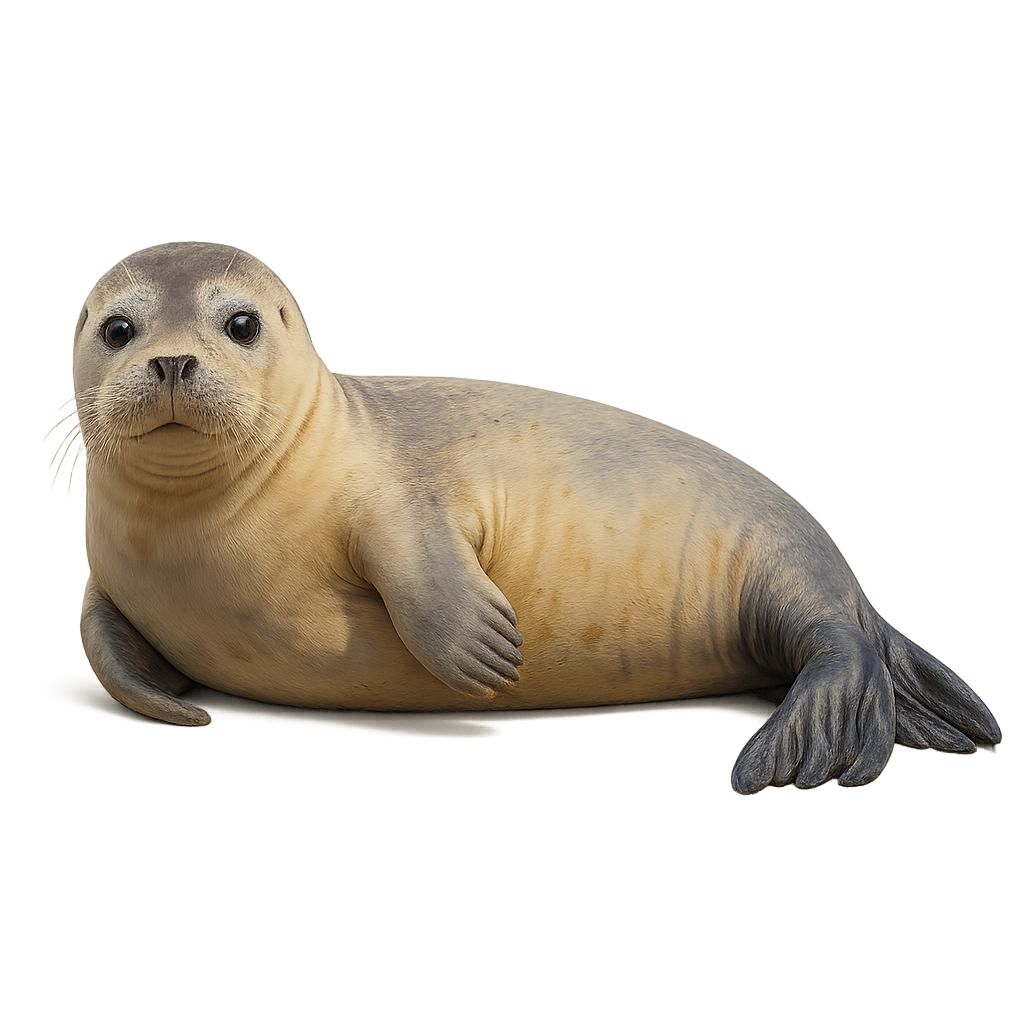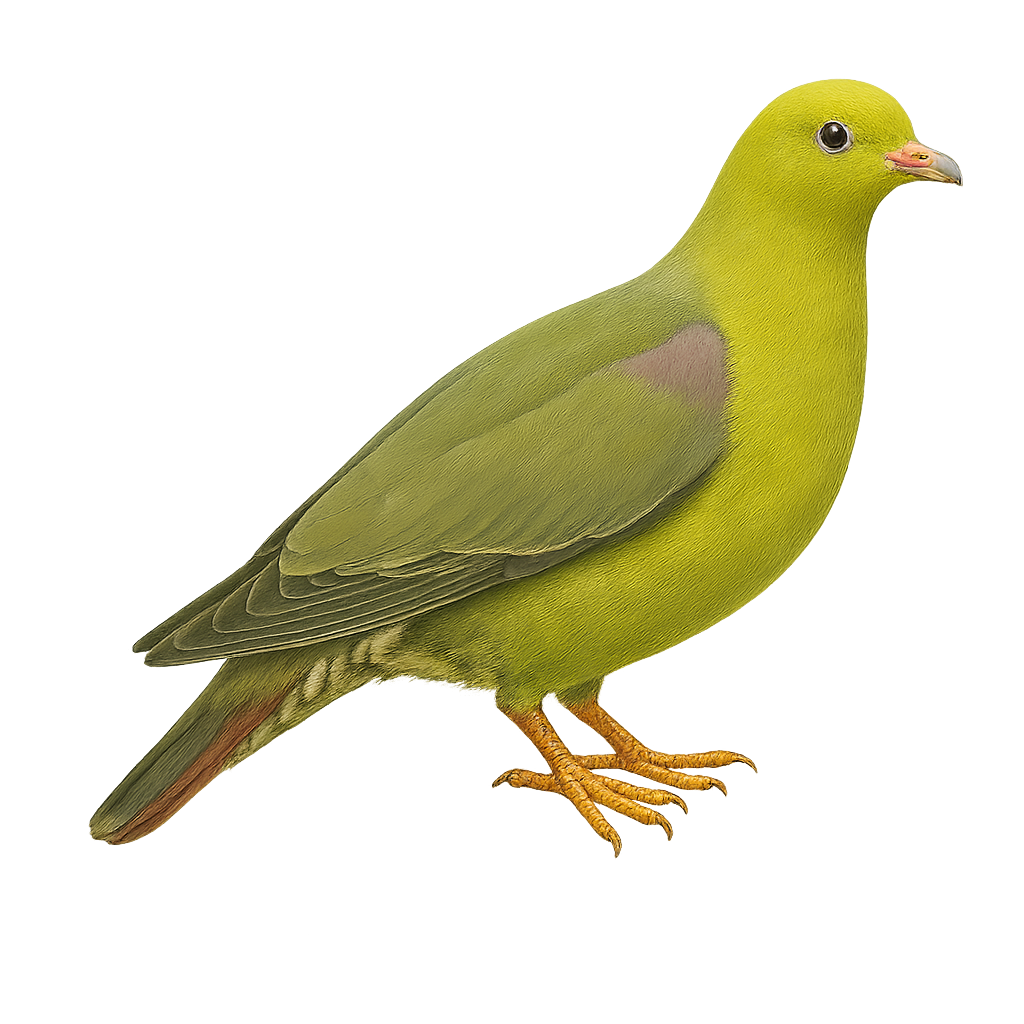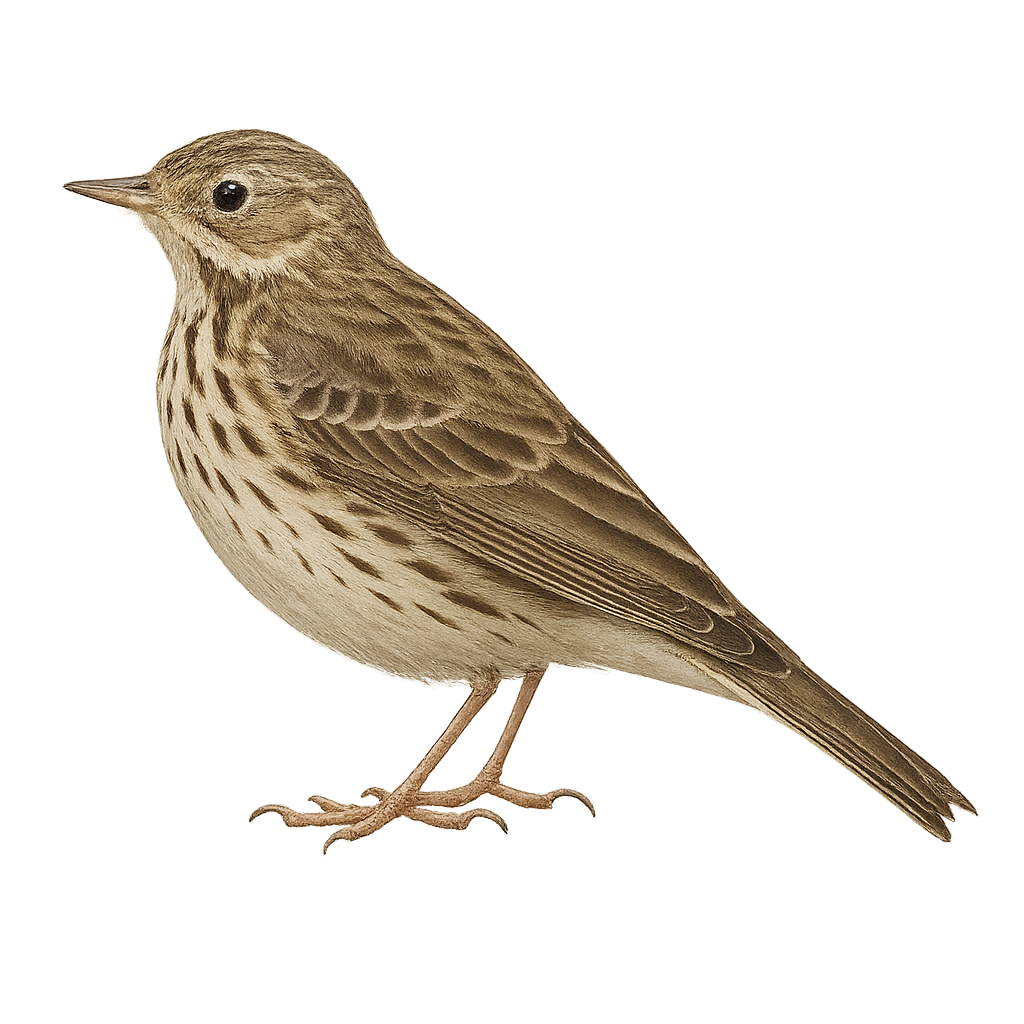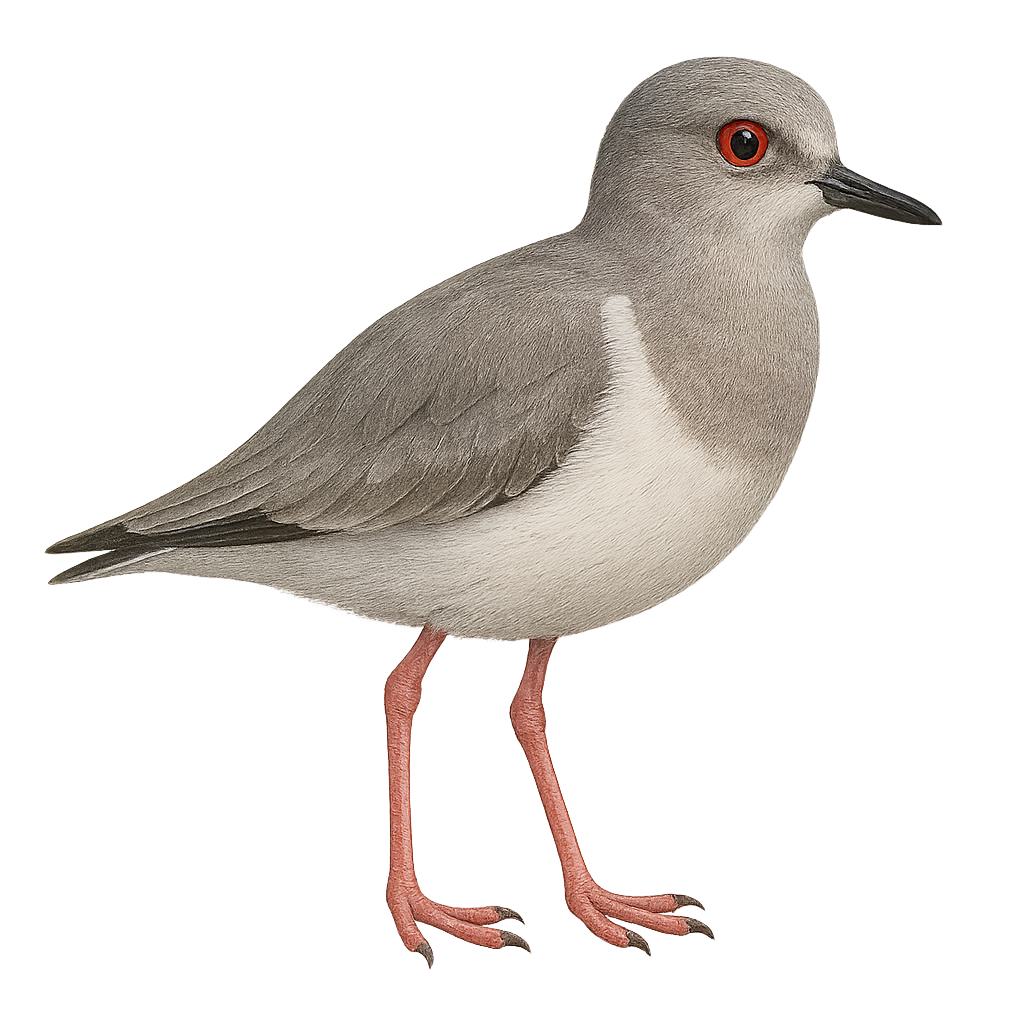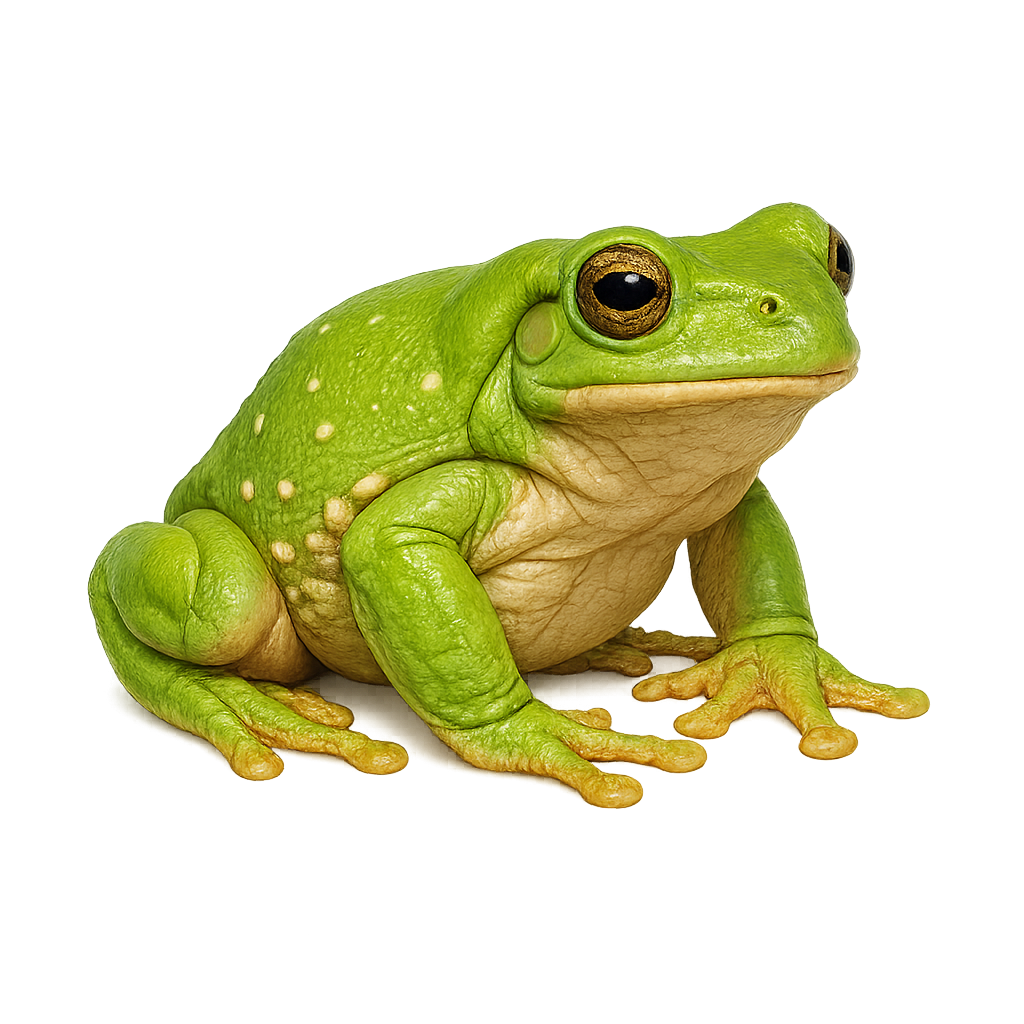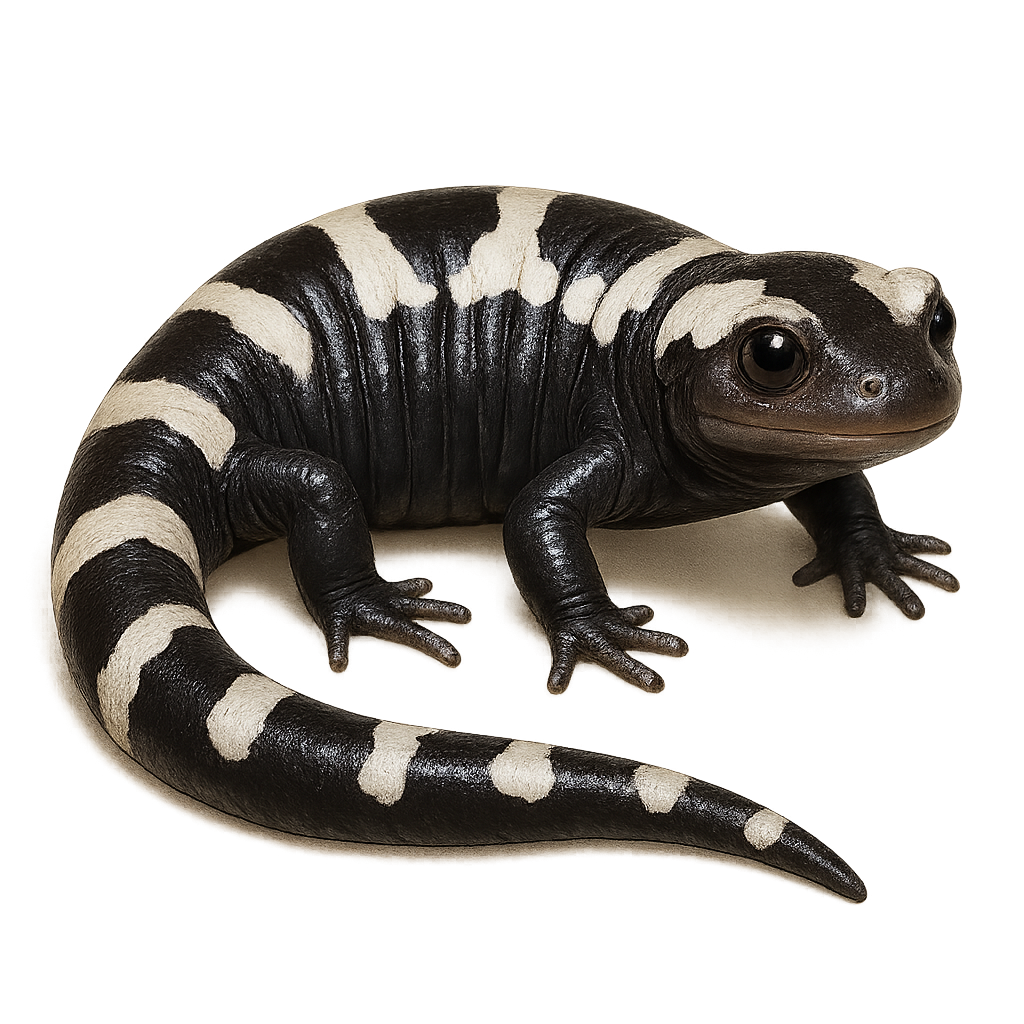The mandrill, Mandrillus sphinx, is a fascinating primate known for its spectacular appearance and complex social behaviors. Native to the tropical forests of Central Africa, it is primarily found in Gabon, Cameroon, and Equatorial Guinea. Males are particularly recognizable due to their colorful faces, with vivid shades of blue and red, and their yellow manes. Females and juveniles are more discreet, with less vibrant colors. Mandrills live in social groups called hordes, which can number up to several hundred individuals. They primarily feed on fruits, seeds, insects, and small animals. Although their habitat is threatened by deforestation, they are still relatively numerous in some protected areas.
The African marabou is a large wading bird native to sub-Saharan Africa, easily recognized by its bare head, long neck, and mostly white plumage with black shades. It primarily lives in open areas near bodies of water, where it feeds on fish, dead animals, and waste. While it is not threatened, it is often associated with urban environments and can be seen in dumps. It is a solitary bird with a rather slow and discreet approach.
The margay is a small arboreal wild cat species found from Mexico to northern Argentina. Solitary and nocturnal, it spends most of its time in trees, hunting birds, monkeys, and small mammals with exceptional climbing skills. It can rotate its ankles up to 180° to grasp branches and uses its long tail for balance. During the breeding season, the female emits a long moaning call to attract the male, which responds with trilling sounds and head shakes before mating high in the trees.

The Markhor is a wild goat species native to the mountains of Central Asia, primarily found in Afghanistan, Pakistan, Tajikistan, and India. It stands about 1.2 to 1.5 meters tall at the shoulder, with a body length of 1.5 to 2 meters, and weighs between 30 and 115 kg, with males generally being larger and more massive than females. The Markhor is famous for its impressive spiral horns, which can grow up to 1.5 meters long in adult males. Its coat is thick, typically brown or gray, with lighter fur on the belly and legs. It lives in mountainous and rocky areas, often at altitudes between 1,000 and 3,000 meters. The Markhor is an herbivore, feeding on mountain vegetation, including shrubs, leaves, and grasses. Although it is an agile climber and skilled at navigating steep terrain, it is also preyed upon by large predators such as snow leopards. The Markhor is classified as vulnerable due to overhunting, habitat loss, and human disturbances, but conservation efforts have helped stabilize its population in some areas.
The Malachite Kingfisher, Corythornis cristatus, is a small, vibrantly colored bird found primarily in sub-Saharan Africa. It is easily recognized by its distinctive crest and bright plumage, which features shades of blue, orange, and white. This kingfisher frequents the banks of rivers, lakes, and marshes, where it primarily hunts fish and aquatic insects. It is often seen perched on a branch or reed, patiently watching for prey before diving with precision to catch it. Despite its small size, it is an efficient and agile predator. Its breeding season varies by region, but it is generally monogamous and territorial during this time.
The Madagascar Pygmy Kingfisher, or Corythornis madagascariensis, is an endemic bird of Madagascar, known for its striking plumage. It features a bright blue head and back, contrasting with a white chest and belly. This small bird, measuring about 13 to 15 cm, is often seen near water bodies, where it primarily hunts small fish and insects. Its long, pointed beak is perfectly adapted for catching aquatic prey. Though discreet, its melodious song often echoes in the island's humid forests and mangroves. It symbolizes Madagascar's unique biodiversity, but its population is threatened by deforestation and habitat degradation.
The Malaysian Blue-banded Kingfisher, Alcedo peninsulae, is a fascinating bird primarily inhabiting the tropical rainforests and mangroves of the Indo-Malayan region. This small bird, measuring about 16 cm in length, is recognizable by its bright blue plumage, darker blue wings and tail, and orange chest. It primarily feeds on small fish and aquatic insects, which it captures by diving precisely into the water. Although discreet, it is often spotted thanks to its sharp, piercing call. Its presence is an indicator of the health of the aquatic ecosystems it inhabits.
The Maleo, or Macrocephalon maleo, is an endemic bird of Sulawesi, Indonesia. Recognizable by its distinctive black crest and black-and-white plumage, this bird is famous for its unique breeding method. Unlike most birds, the maleo buries its eggs in the warm sands of volcanic or geothermal beaches, using natural heat for incubation. Once hatched, the chicks must fend for themselves, digging their way to the surface and flying immediately. The maleo is an endangered species, mainly due to habitat loss and egg collection by humans. Conservation efforts are underway to protect this fascinating bird and its natural habitat.
The marsh tit is a small passerine bird found primarily in broadleaf forests, thickets, and wetland areas across Europe and Asia. It is easily recognized by its light brown plumage, black crown, and white belly. This small bird primarily feeds on insects, seeds, and berries, which it finds in the foliage and underbrush. The marsh tit is also known for its curious behavior and soft song.
The Mona monkey, or Cercopithecus mona, is a medium-sized primate native to the tropical forests of West Africa. It is characterized by its golden-brown fur, white face, and long tail. Mona monkeys live in social groups and are known for their agility and ability to move quickly through the canopy. They primarily feed on fruits, but their diet also includes leaves, flowers, and insects. These monkeys are diurnal and spend most of their time foraging and socializing. Although generally wary of humans, they can become accustomed to their presence in protected areas.
The Morepork, or Ninox novaeseelandiae, is a medium-sized owl native to New Zealand and Australia. It is easily identified by its brown plumage speckled with white and its large yellow eyes. This nocturnal raptor is an agile hunter, feeding primarily on insects and small mammals. Its distinctive call, resembling "more-pork," is often heard in forests and wooded areas. The Morepork is a solitary bird, although it can be seen in pairs during the breeding season. It prefers dense forest habitats but can also be found in urban gardens and parks.
The Malayan bear is the smallest of the bears, characterized by its small size, black fur, and a light-colored fur collar around its neck. It primarily lives in the tropical forests of Southeast Asia, where it feeds on fruits, honey, and insects. This animal is rather discreet, nocturnal, and semi-arboreal, often seen in trees looking for food. Although protected, the Malayan bear faces serious threats such as deforestation and illegal hunting.
The Ptiloris magnificus, or Magnificent riflebird, is a bird of the Paradisaeidae family, renowned for its striking plumage and spectacular courtship displays. Males display glossy black feathers with metallic blue and green sheens, while females are more subdued in brown tones. This bird is endemic to the rainforests of New Guinea and northeastern Australia. It primarily feeds on fruits and insects. Males perform intricate dances to attract females, showcasing their feathers and producing distinctive sounds. Although their habitat is threatened by deforestation, they are not currently critically endangered.
The Magnolia Warbler is a small songbird in the Parulidae family, known for its vibrant plumage and distinctive markings. The male features a black back with white streaks and a bright yellow belly, while the female has duller colors. These migratory birds breed primarily in the coniferous forests of Canada and the northern United States, wintering in Central America. They feed mainly on insects and larvae, capturing them by flitting agilely among branches. Their melodious song is often heard in spring, heralding the breeding season. Although their population is stable, deforestation and habitat loss pose potential threats.
The Masked Flowerpiercer is a small, colorful bird from the Thraupidae family, primarily found in the montane forests of South America. It is distinguished by its bright blue plumage and the black mask around its eyes. This bird is often seen piercing flowers to feed on nectar, hence its English name "Flowerpiercer". It plays a significant role in the pollination of plants in its habitat. Although primarily frugivorous, it also consumes insects. Its presence is an indicator of the health of montane ecosystems.
The Minke Whale is a medium-sized cetacean, a member of the baleen whale family, found in the Atlantic, Pacific, and Southern Oceans. It measures between 7 and 10 meters in length and weighs between 5 and 10 tons. Its body is streamlined, and its color ranges from gray-blue to black, with a lighter belly. This whale primarily feeds on plankton, small fish, and crustaceans, which it filters by swimming with its mouth open. It is an excellent swimmer and can dive to impressive depths for several minutes. While its population remains stable, the Minke Whale is threatened by ocean pollution, ship collisions, and habitat loss due to human impact on marine ecosystems.
The Murphy's Petrel, or Pterodroma ultima, is a medium-sized seabird belonging to the Procellariidae family. It is primarily found in the South Pacific, especially around the Pitcairn Islands and the Tuamotu Archipelago. This bird is characterized by its gray-brown plumage, long slender wings, and graceful, agile flight. The Murphy's Petrel feeds mainly on fish and squid, which it catches by diving into the ocean. It nests on remote islands, digging burrows in the ground to lay its eggs. Although its conservation status is concerning, efforts are underway to protect its breeding habitats.
The Mediterranean monk seal is a large marine mammal, 2–3 m long and weighing 200–350 kg, with a streamlined grey body and smooth skin. A critically endangered species of the Mediterranean coast and eastern Atlantic, it occupies coastal caves, remote beaches and shallow waters, feeding mainly on fish and cephalopods.
The Magellanic Woodpecker, or Campephilus magellanicus, is a large black and white woodpecker, easily identified by the male's bright red crest. It primarily inhabits the temperate forests of Patagonia, in Argentina and Chile. This forest bird feeds mainly on wood-boring insects, which it finds by drilling into dead or diseased trees. It plays a crucial role in the ecosystem by controlling pest insect populations and creating cavities that provide shelter for other species. Although its habitat is relatively stable, it is vulnerable to deforestation and forest fragmentation.
The Middle Spotted Woodpecker is a medium-sized bird from the woodpecker family, primarily found in deciduous and mixed forests of Europe and Asia. It measures about 23 to 26 cm in length, with a wingspan of 40 to 45 cm, and weighs between 60 and 100 g. Its plumage is primarily black and white, with a red head in males and a red patch on the nape in females. The Middle Spotted Woodpecker is an excellent climber, using its strong beak to dig into tree bark in search of insect larvae, ants, and small arthropods. It generally lives in older, less disturbed forests, but its population can be threatened by deforestation and the loss of its natural habitat.
The magpie is a very social and intelligent bird found primarily in Europe, Asia, and North Africa. It is easily recognized by its black and white plumage, long beak, and long, pointed tail. The magpie is omnivorous, feeding on insects, small vertebrates, fruits, seeds, and even human scraps. It is also known for its curious nature and its habit of collecting shiny objects for its nest.
The Treron australis, or Madagascar Green Pigeon, is a bird species endemic to Madagascar. This pigeon is notable for its bright green plumage, which provides excellent camouflage in the island's tropical forests. It has a sturdy beak and short legs, well-suited to its arboreal lifestyle. The Treron australis primarily feeds on fruits, playing a crucial role in seed dispersal within its habitat. It is often seen in small flocks, moving quietly through the canopy. Although its conservation status is concerning due to deforestation, it remains relatively common in protected areas.
The meadow pipit is a small passerine bird found primarily in meadows, cultivated fields, and farmland across Europe and Asia. It is distinguished by its brown streaked plumage on its back and belly, as well as its furtive movement and melodious song. This bird primarily feeds on insects and seeds, which it searches for in tall grasses. During the breeding season, it performs song flights, a characteristic that makes it easy to spot in its habitat.
The Magellanic Plover is a unique bird, often mistaken for plovers, although it belongs to a distinct family. It is endemic to the southern regions of South America, particularly in Patagonia. This bird is characterized by its pale gray plumage, pink legs, and black bill. It primarily inhabits the shores of lakes and lagoons, where it feeds on aquatic invertebrates. The Magellanic Plover is monogamous and territorial, building its nest on the ground, often near water. Its population is considered stable, although limited to a restricted range. It is of interest to ornithologists due to its unique behavior and particular taxonomic status.
The Manx Shearwater, Puffinus puffinus, is a medium-sized seabird, measuring about 30 to 38 cm in length with a wingspan of 76 to 89 cm. Its plumage is predominantly black above and white below, allowing it to blend into its marine environment. Known for its long migrations, this bird travels thousands of kilometers between its breeding sites in Europe and wintering grounds in South America. It nests in burrows on isolated islands, often in dense colonies. The Manx Shearwater feeds mainly on fish and squid, diving underwater to catch its prey. Although relatively common, it is vulnerable to introduced predators at its nesting sites.
The Map Treefrog, Boana geographica, is a species of amphibian in the Hylidae family. It is primarily found in the humid tropical forests of South America, particularly in Brazil, Colombia, and Peru. This frog features a green coloration with distinctive geographical patterns on its back, allowing it to effectively camouflage in its natural environment. It is generally nocturnal, feeding on insects and other small invertebrates. The Map Treefrog plays a crucial role in the ecosystem by regulating insect populations. Although its conservation status is currently "Least Concern," deforestation and habitat loss pose potential threats to its long-term survival.
The Mexican Giant Tree Frog, or Agalychnis dacnicolor, is a tree-dwelling frog species native to the tropical forests of Mexico. It is easily recognizable by its bright green skin and distinctive red eyes, giving it a striking appearance. This frog is primarily nocturnal, resting on leaves during the day and becoming active at night to hunt insects. It uses its adhesive pads to climb trees and move agilely through its habitat. The Mexican Leaf Frog plays a crucial role in the ecosystem by regulating insect populations and serving as prey for various predators. Although its population is stable, it is threatened by deforestation and habitat loss.
The Misfit Leaf Frog, or Agalychnis saltator, is an arboreal frog native to the tropical forests of Central America. It is particularly known for its ability to leap long distances, allowing it to move efficiently between tree branches. Its skin is a bright green, providing excellent camouflage among the foliage. This frog's eyes are red with a vertical pupil, giving it a striking appearance. It is primarily nocturnal, hiding during the day to avoid predators. The leaf frog plays a crucial role in its ecosystem by regulating insect populations and serving as prey for other animals.
The Magnificent Tree Frog, or Litoria splendida, is a species of tree frog endemic to Australia, primarily found in the humid regions of the north. It is distinguished by its bright green color and golden eyes, making it a subject of fascination for herpetologists and nature enthusiasts. Measuring between 7 and 11 cm, this frog has smooth skin and adhesive fingers that allow it to easily climb trees. It is often active at night, feeding on insects and other small invertebrates. Although relatively tolerant of human activity, it is sensitive to environmental changes, particularly deforestation and water pollution.
The Ambystoma opacum, or marbled salamander, is a fascinating amphibian native to North America. It is distinguished by its modest size, typically between 9 and 11 cm, and its unique black and white coloration, giving it a marbled appearance. This salamander prefers humid habitats such as deciduous forests and marshy areas. It is nocturnal, meaning it is primarily active at night. The marbled salamander is oviparous, laying its eggs in moist depressions before the autumn rains. It is known for its ability to hide under leaves and debris to avoid predators. Although its conservation status is concerning, it is not currently endangered.


